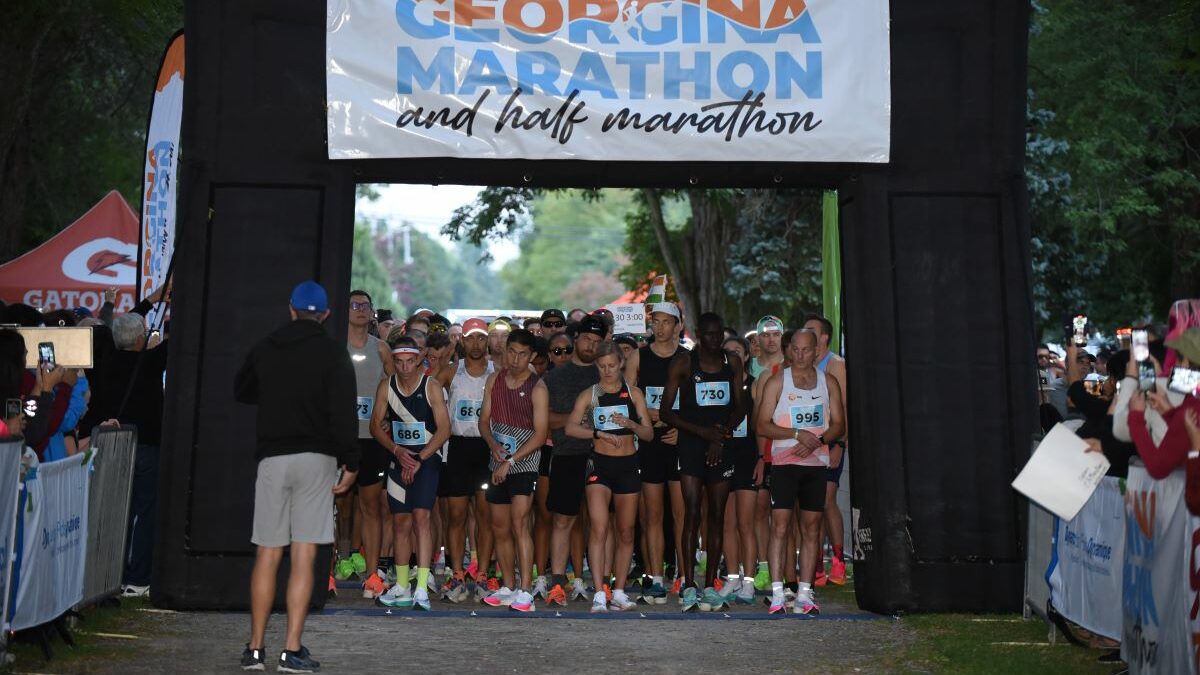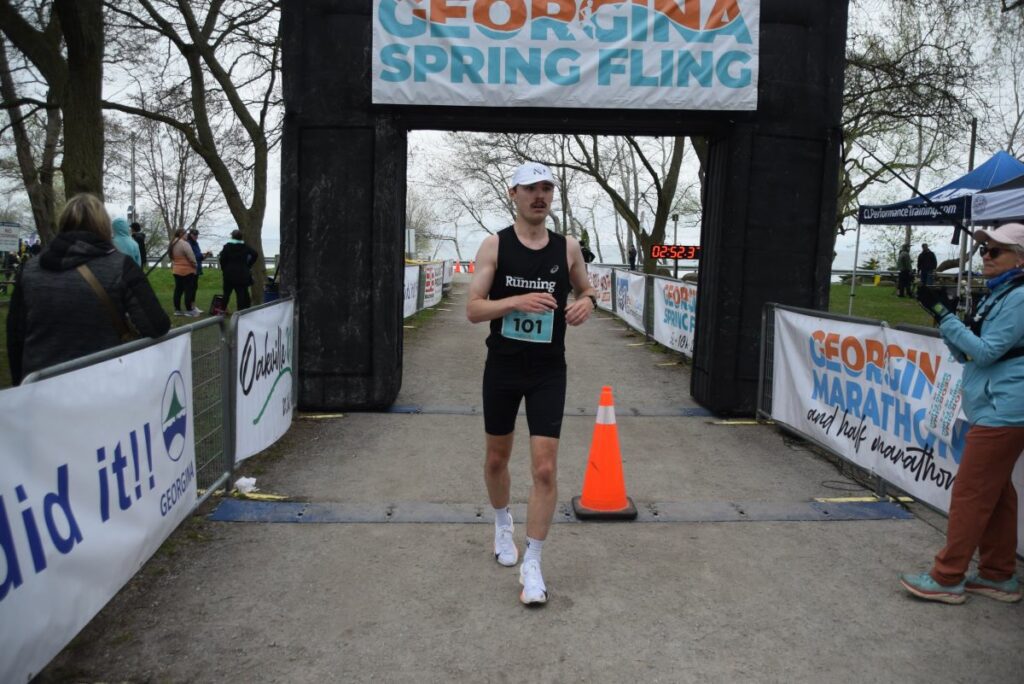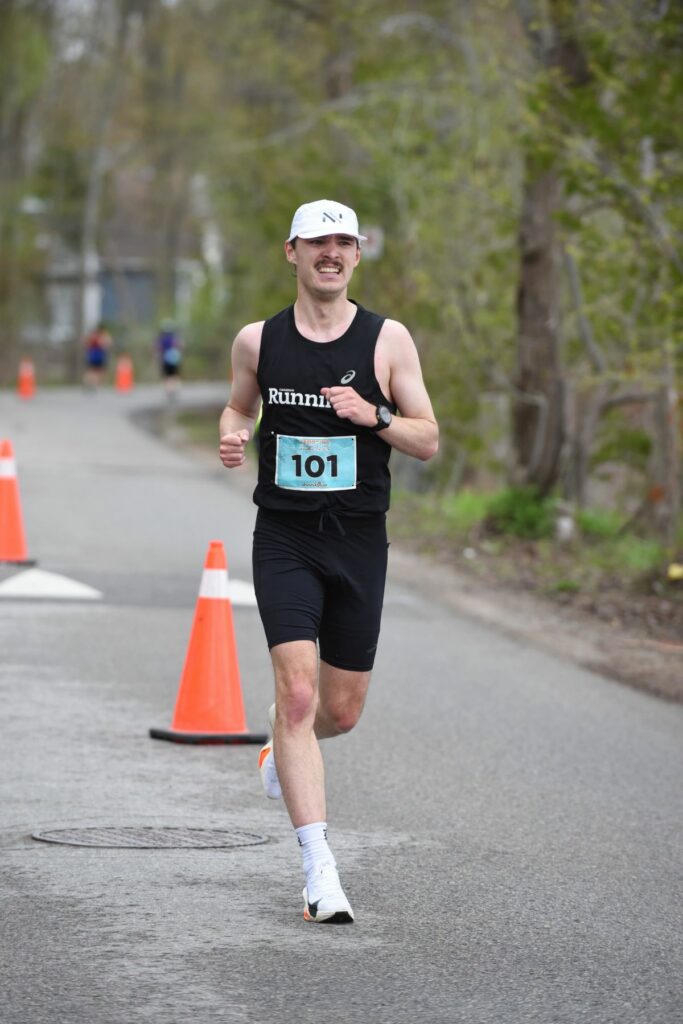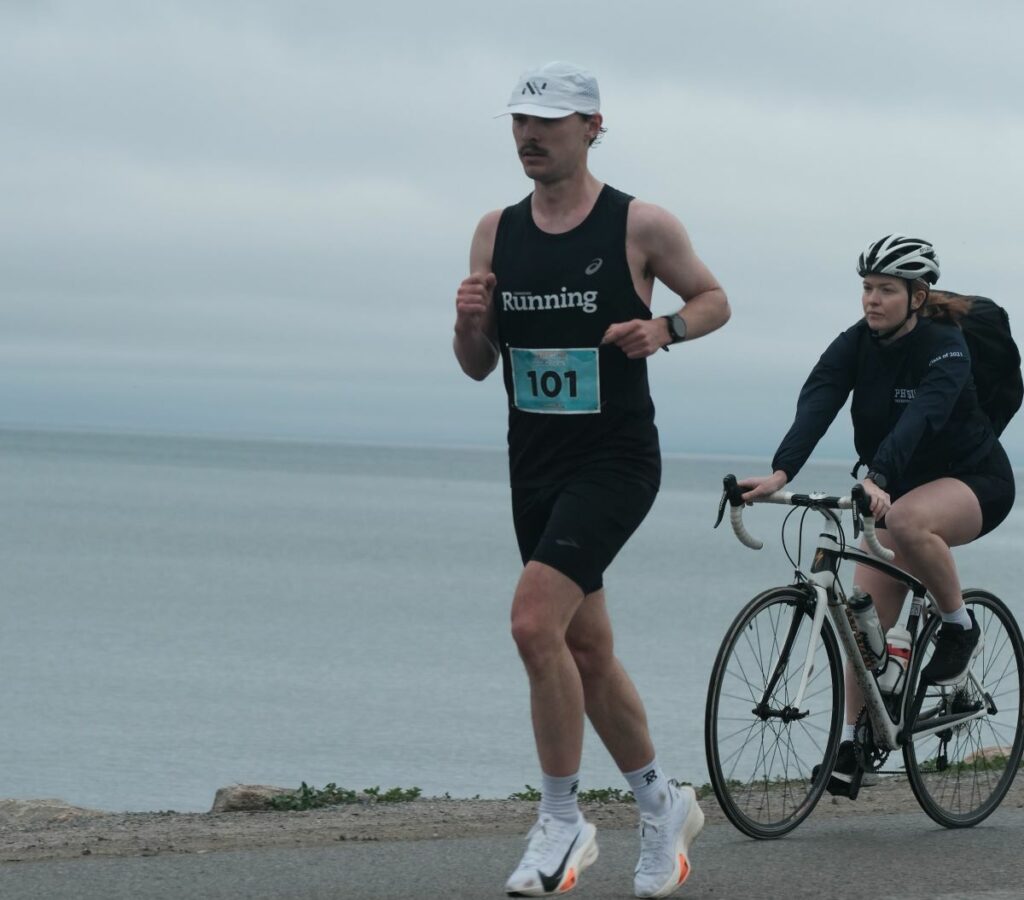Four things I, an experienced runner, learned from my first marathon
Marathons are hard, but you might learn the most from your first
 Photo by:
Mike Cheliak/Georgina Marathon
Photo by:
Mike Cheliak/Georgina Marathon
I’ve been a runner for two decades, and whenever the subject of running comes up at a party or in a social setting, no one seems to care about how fast I can run a mile or 5K—the question is always, “Do you run marathons?” Finally, I can say yes, since I ran my first marathon this spring at Ontario’s scenic Georgina Marathon on the south shore of Lake Simcoe.
For various reasons, my marathon build was short (eight weeks), but I achieved my C goal of sub-three, a Boston qualifying time, and a top-five finish. But the most important thing for me was not the time, but the experience and lessons I learned in those two hours and 52 minutes. Here are four takeaways.

Nothing can prepare you for The Wall
It doesn’t matter how much you train or how much weekly mileage you put in—when you are on the start line of your first marathon, you have no idea how your body will feel at the 35 km mark. The goal is to pace and fuel yourself well, so you feel great later on, but for inexperienced marathoners (like myself), it isn’t always the case. That feeling you get when you’re 35 km in is hard to train for, and despite having done some long training runs, they were not at the same intensity. My pace started to dwindle, despite my effort remaining the same.
Everyone’s body will react differently to The Wall, no matter how much you prepare for it. Learning how to deal with The Wall is something I’ll take away from my first marathon, and (hopefully) figure out how to deal with for my next.

Long runs are more important than you realize
Unlike some other distances (I’m looking at you, 10K and half-marathon), there’s no way you can cheat your way through training and expect to run a good marathon time. It’s plain and simple: you can’t miss long runs. They serve a bigger purpose than learning if your body can keep going beyond 30K. They are also unmissable opportunities to practise your nutrition intake and test your gear (i.e., shoes and clothing) to find out what works (and what doesn’t).
One of my biggest regrets from my build was doing more 28K-plus long runs. My longest run was only 33 km, at a very comfortable (Zone 2) pace. Coming from a middle-distance track background, I am used to hard workouts and keeping my non-workout days easy, to stay injury-free and allow my body to recover. When training for the marathon, your long runs become a workout, and you want these efforts to be a little bit harder than usual. What I mean by this is implementing several surges or intervals at marathon pace during your longer runs to get your body used to moving at your goal pace when it is fatigued.
Don’t get too excited at the half-way point
As one does in their first marathon, I went out at my A goal pace. From doing a few half-marathons in the past (which I recommend all runners do before stepping up to the marathon), I knew going out at a conservative pace for the first 10K would pay dividends later in the race. I came through halfway a minute under my A-goal pace and felt amazing, and I thought I was about to run something ridiculous. These are the mental games the marathon plays with you, and I quickly decided that since I felt great, I would keep my foot on the gas from 21 to 31 km.

Anyone who has done the training should feel good at halfway, but the key is to stay composed. It’s easy to get caught up in your half-split; the race clock dangles the time in front of you, and it’s tempting to ignore any thought of what could happen if you ran the same split in the second half. I wish marathons were that simple, but they aren’t.
You need a plan, and a contingency plan
As with any race, you train for your A goal, but what’s different about the marathon is that a lot more can go wrong, and you need to find ways to bounce back. You do everything you can in training to prepare for marathon morning, but the chances of everything going according to plan are slim. In my case, I wanted to run under my A goal of 2:45:00, but I also created a B goal, C goal and D goal (just finish). It’s great to have a plan for your perfect race, but the marathon is unforgiving, and things don’t go as expected.
Develop a pacing strategy for the first 10K or half-marathon within your time goals, and structure your gels/drinks around water stations. Be prepared to adjust your pace if you encounter unexpected weather, fatigue, or pain. Familiarize yourself with the course, including the uphills and downhills, so you can anticipate where you might need to conserve energy or push harder. Mentally prepare for the possibility of hitting The Wall, and have a strategy for how to push through it. One thing that helped me was having my family and close friends at the 5K-to-go mark. When I reached that point, they shouted, “It’s only 5K, you run that all the time!” which immediately boosted my energy and helped me stay optimistic.


